


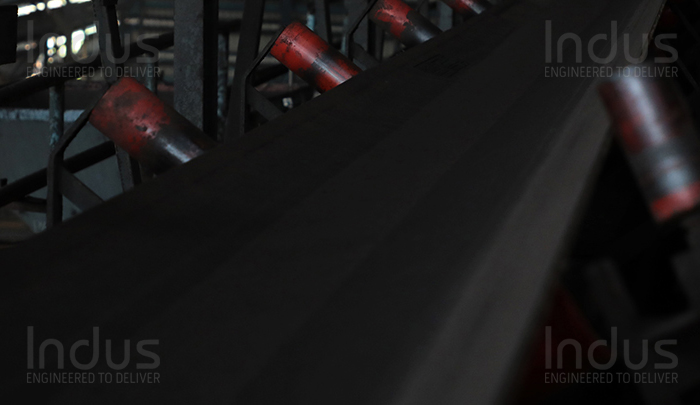

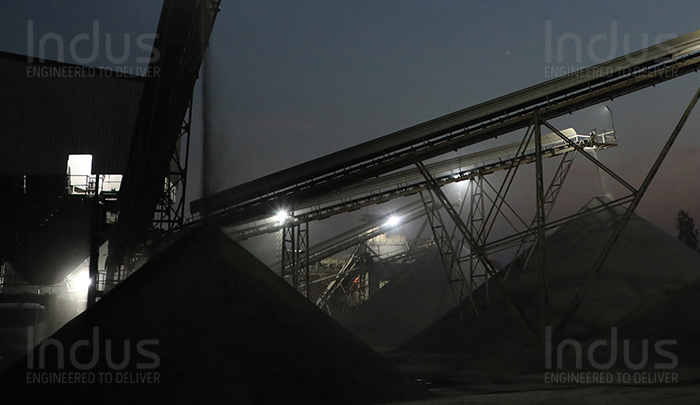

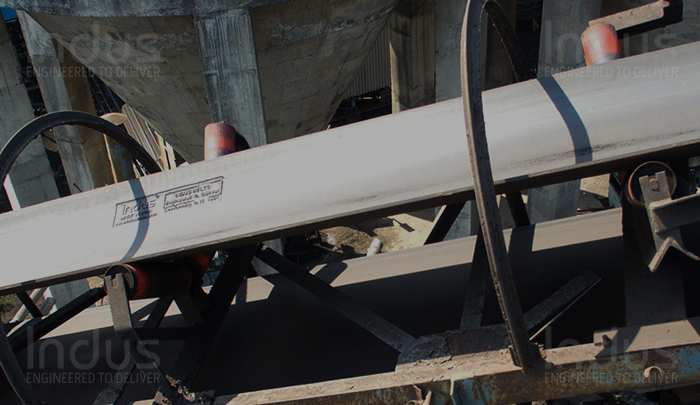


 INDUS SUPER TREKKER
INDUS SUPER TREKKERSpace is a major constraint in setting up cost effective conveyor system in any industry. Hence, conveyor systems are designed with high inclination so as to accommodate them in the given constrained space.
We recommend Indus Super Trekker Conveyor Belts in such areas where the conveyor inclination angle is steep. The Indus Super Trekker Conveyor Belts are modern age Bucket Elevator Box Belts. These belts are made with cleats and sidewall. The concept of these belts is to carry material on steepest angle up to 90 degree with zero spillage.
These belts can be driven at the speed of up to 5 m/sec. The space requirement is quite less as compared to conventional belts.
| Standard Widths | Up to 2000mm (78.75") |
| Type of Fabric | EP with Cross Stabilized Ply |
| Breaker Fabric Ply | Optional / as per customer requirement |
| Standard Belt Rating | 315 kN/m (170 PIW) to 2500 kN/m (1400 PIW) |
| No. of Ply’s | 2 Ply to 5 Ply |
| Rubber Cover Thickness | 3mm (1/8") to 8mm (5/16") |
| Colour | Black |
| Edge | Cut Edge / Moulded Edge |
| Splicing Method | Hot / Cold |
| Single Roll Length | Standard Length : 150 meters (500’) |
| Standard Packing | Packing in Metal Frame |
| Belt Identification Number | A unique BIN (Belt identification number) at every 10 meters (33’) |
Steel Industry, Cement Industry, Coal & Coking Industry, Construction Industry, Potash and Salt Mining, Stones and Earth, Fertilizer & Chemical Industry, Recycling Plant , Agriculture, etc.
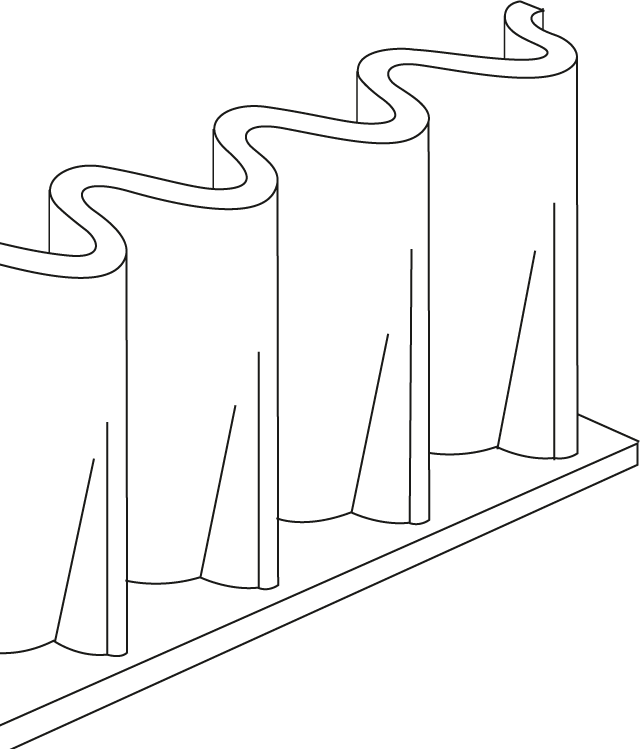
Base Belt plays a key role in steep angle conveyor belts. The base belt is made with special cross rigid member design to get more stability and rigidity. The base belt is designed to bend efficiently in a longitudinal direction and has greater rigidity in a transverse direction by using special reinforced fabrics with monofilament which creates a fabric carcass of high tension. The different design of cross rigid belts are available with us such as:






Indus cleats are designed with proper rigidity to preclude excess backward bending due to gravitational force exerted by the material loaded in the cleats. By seeing certain critical applications, we have modified all type of cleats with Synthetic fabric reinforcement to avoid tearing due to material gravitational force. Depending upon the angle of inclination & the other factors the type of cleat is selected from the below listed range of Indus Cleats:
Type 'T', 'K', 'TKS' & 'TKS3P' cleats are reinforced into the side walls using metal fasteners.
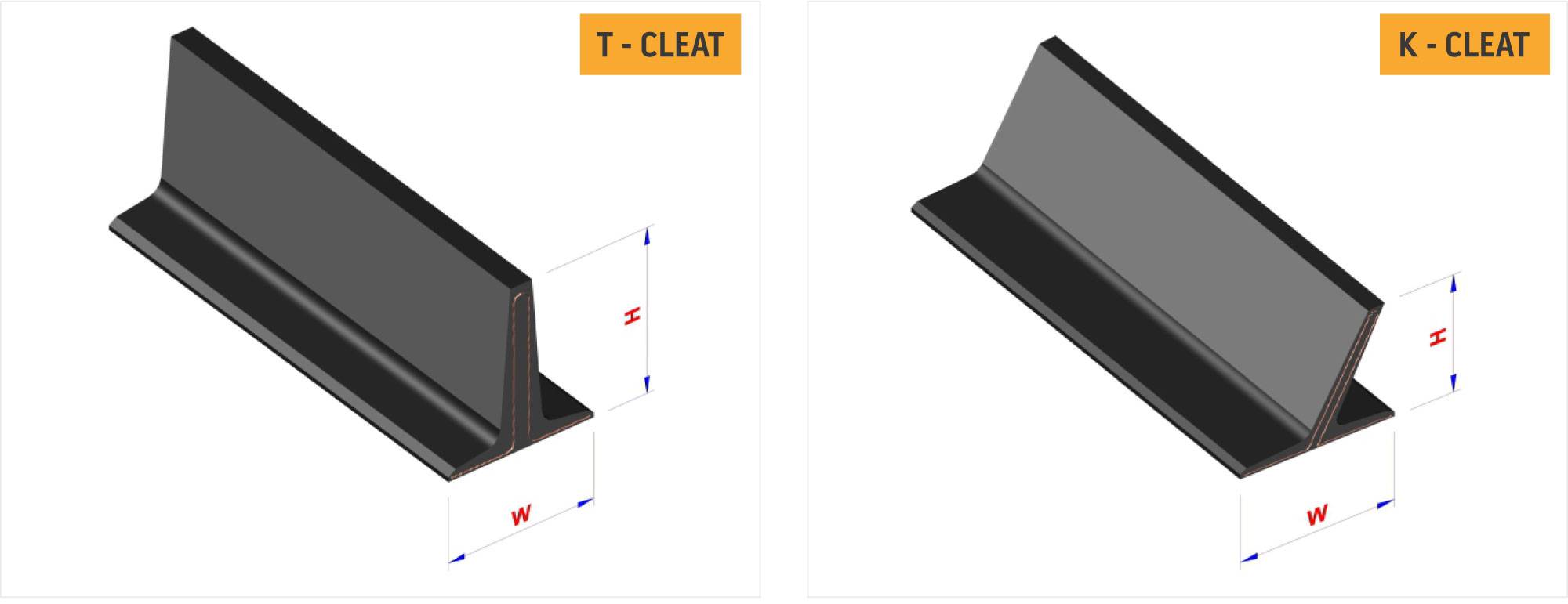
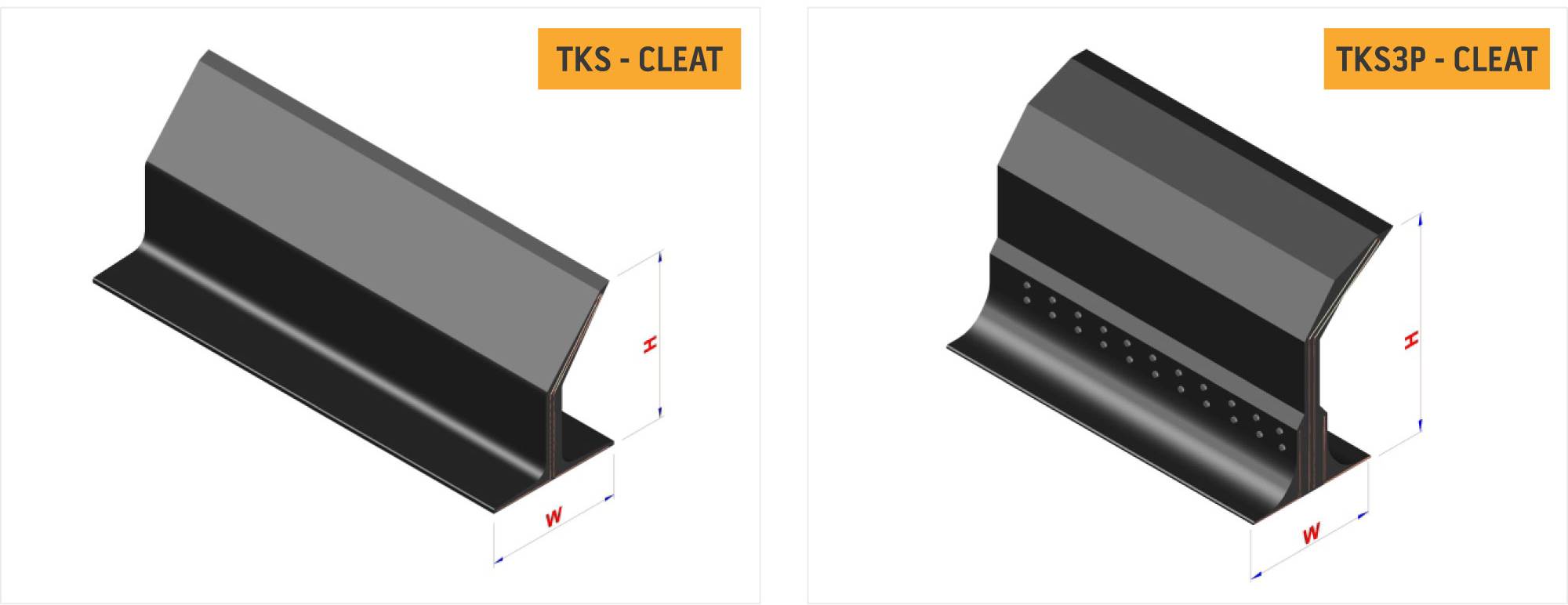
The sizes not mentioned in this table can be manufactured up on request.
| SR. NO | TYPE | HEIGHT | BASE WIDTH |
|---|---|---|---|
| 1 | 'T' | 75 | 75 |
| 2 | 'T' | 110 | 100 |
| 3 | 'K' | 75 | 100 |
| 4 | 'K' | 100 | 100 |
| 5 | 'TKS' | 75 | 75 |
| 6 | 'TKS' | 110 | 100 |
| 7 | 'TKS' | 140 | 150 |
| SR. NO | TYPE | HEIGHT | BASE WIDTH |
|---|---|---|---|
| 8 | 'TKS' | 180 | 150 |
| 9 | 'TKS' | 220 | 150 |
| 10 | 'TKS' | 240 | 150 |
| 11 | 'TKS' | 280 | 190 |
| 12 | 'TKS3P' | 280 | 230 |
| 13 | 'TKS3P' | 330 | 230 |
| 14 | 'TKS3P' | 380 | 230 |
The side wall has been designed to achieve adequate rigidity to avoid the buckling under compression experienced by it at the point of deflection. The top portion of the side wall has been designed against tear & gauging resistant by using special rubber compound having high elongation at break. The side walls are fully reinforced with synthetic fabric to get better life.

The sizes not mentioned in this table can be manufactured up on request.
| SR. NO | TYPE | HEIGHT | BASE WIDTH | PITCH |
|---|---|---|---|---|
| 1 | SW | 40 | 60 | 40 |
| 2 | SW | 60 | 60 | 40 |
| 3 | SWF | 60 | 60 | 40 |
| 4 | SWF | 80 | 60 | 40 |
| 5 | SWF | 100 | 60 | 40 |
| 6 | SWF | 100 | 80 | 60 |
| 7 | SWF | 120 | 80 | 60 |
| 8 | SWF | 160 | 80 | 60 |
| 9 | SWF | 200 | 80 | 60 |
| 10 | SWF | 240 | 80 | 60 |
| 11 | SWF | 260 | 80 | 60 |
| 12 | SWF | 300 | 80 | 60 |
| 13 | SWF | 350 | 100 | 60 |
| 14 | SWF | 400 | 100 | 60 |
All belts are given further reinforcements by mechanically fixing the sidewall to each cleat with fasteners, washers and moulded nylon sidewall supporting fixture. The same can be applied with or without the side blinkers.
Available as an option, side blinkers are placed between the wall and cleat. is installation will minimize the amount of material catching in between the corrugations and the cleat, therefore reducing carry back and spillage. Particularly useful in applications where the material is small and free flowing.